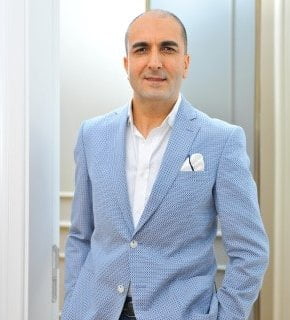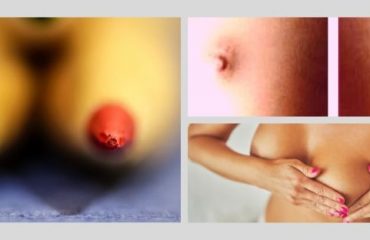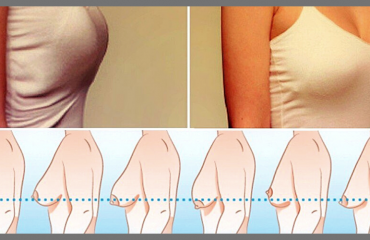
What is breast cancer? What are the symptoms and stages of breast cancer? How is breast cancer diagnosed and treated? You can learn more about surgical procedures and treatments in this article of Professor Dr Şükrü Yazar.
What is Breast Cancer?
Cancers that occur in breast tissue where milk is produced, to be specific; the lobules, milk glands or milk drainage channels, and spread according to its character, are called breast cancers. It is one of the most common cancer types among women in the world, along with lung and cervical cancer. According to statistics, one in every eight women in the world carries the risk of breast cancer.
Types of Breast Cancer
There are two main types of breast cancer: invasive (spreading cancer type) and non-invasive (non-spreading cancer type).
- Invasive (Spreading) Breast Cancer:
It is a type of cancer that does not remain in the area where it begins to form and spreads to different areas.- Ductal Breast Cancer:
Ductal cancer is the most common form of breast cancer that can occur anywhere in the breast tissue. In medical language, it is known as the Invasive Ductal Carcinoma and occurs in the milk ducts. It is a type of cancer that is seen in 75 of every 100 breast cancers, and develops in the cells of the milk duct and spreads to the surrounding tissues. In invasive ductal breast cancer, cells are separated from the canals so they can spread to the lymph nodes or any other part of the body. - Lobular Breast Cancer:
It is a type of cancer that starts in cells located in the lobes and spreads to the surrounding tissues. In medical language, it is known as “Invasive Lobular Carcinoma. One out of every 100 breast cancers is lobular cancer and is usually seen between the ages of 40 and 55 years.
- Ductal Breast Cancer:
- Non-invasive (Non-Spreading) Breast Cancer:
It is the type of cancer that remains in the region where it begins to form in the breast and does not spread to different areas.- LCIS (Lobular Carcinoma in Situ):
It is the formation in which the cells in the glands begin to turn into cancer. These formations are inside the breast lobules and have not yet spread around the breast tissue. They are not reported as cancer but are likely to turn into cancer unless treated. A woman diagnosed with LCIS means that she is at high risk for breast cancer. - DCIS (Ductal Carcinoma in Situ) Cancer Type:
It is the formation in which the cells in the milk ducts begin to turn into cancer. It has not yet spread around the breast tissue. They are not reported as cancer but are likely to turn into cancer unless treated.
- LCIS (Lobular Carcinoma in Situ):
- Other types of breast cancer:
- Medullary Carcinoma, (What does carcinoma mean? Any cancer that occurs in epithelial or glandular tissues is called carcinoma in the medical literature.)
- Mucinous (Mucoid – Colloid) Carcinoma
- Tubular Carcinoma
- Adenoid Cystic Carcinoma of the Breast
- Metaplastic
- Angiosarcoma
- Lymphoma
- Basal Type
- Phyllodes (Cystosarcoma phyllodes) Tumour
- Papillary,
- Paget’s Disease of Nipple (Breast)
- Inflammatory Breast Cancer (T4d)
- Rare types of breast cancer:
- Squamous Cell Carcinoma,
- Adenoid Cystic Carcinoma,
- Apocrine Carcinoma,
- Angiosarcoma (Lymphangiosarcoma),
- Lymphoma
Symptoms of Breast Cancer
The most common breast cancer symptom is the painless mass that grows over time in the breasts. It is usually possible to detect cancer in the breast with palpation. Tumours, which are detected by the examination of the specialist or determined by radiological tests, are fixated in the breast. They come up as masses that are larger than 1 cm, with uneven, serrated and irregular edges. Apart from these symptoms;
- Irritation, cracking, redness and deterioration of the breast skin
- Breaks, wounds, crusting, swelling and excessive growth in the breast
- Thick and orange peel skin
- Inwardly turned nipple and extreme sensitivity
- Asymmetry between breasts
- Extravagant shape and directional changes at the nipple
- Red or pink painful, normal or bloody discharge in the breast
- Stiffness or mass formation in the axillar area of the body
- Pain that occurs in the breasts during menstrual periods in women can be present as early-stage symptoms. Pain and discharge might be seen in the later stages.
Stage of Breast Cancer
Breast cancer is a slowly progressing cancer. The tumour reaches 1 cm in a period of about 5 or 7 years and can spread to the axillary lymph nodes located through the lymphatic ducts, and to distant organs such as the liver and bone through the blood circulation. Determining the stage of the disease is very important for determining the treatment methods. Therefore, staging is performed. A system called TNM, whereas T shows the diameter of the tumour, N shows the number of lymph nodes, and M (metastasis) shows distant spread, is used for staging.
Breast cancer has four stages. Stage 1, 2, and a part of stage 3 are considered early-stage breast cancer. Stage 3 and 4 are considered as the advanced stage. The staging process is based on the size of the tumour and whether it has spread to the lymph nodes in its immediate vicinity. According to this, cancer stages are defined as follows:
Beginning: (LCIS – Lobular Carcinoma in Situ), (DCIS – Ductal Carcinoma in Situ)
Lobular Carcinoma in Situ (LCIS) correspond to abnormal cells in the lobule and is a marker of high cancer risk in the breasts. Women with LCIS are at higher risk of developing cancer in both breasts in the future.
Ductal Carcinoma in Situ (DCIS) is a pre-cancerous condition in the ducts. Abnormal cells do not spread out of the canal and spread to the breast tissue. If DCIS is left untreated, it can become a spreading type of cancer.
Stage 1: Indicates that the tumour is less than 2 cm and has not spread to the lymph nodes.
Stage 2: indicates that the tumour is between 2-5 cm; it has spread to the surrounding lymph nodes or not.
Stage 3: Indicates that the tumour has spread to the surrounding lymph nodes.
Stage 4: Indicates that the tumours has spread to distant organs such as bone, brain, lung, liver or distant lymph nodes.
Diagnosis of Breast Cancer
As with all types of cancer, early diagnosis is vital in breast cancer. An early diagnosed breast cancer is easy to treat and has a high chance of success. For early diagnosis, women need to examine themselves once a month in front of the mirror for pain, mass, cyst, etc.
The successful treatment of breast cancer is closely related to early diagnosis. Please do not forget to take time for yourself to diagnose.
It is recommended that women have a breast ultrasound done between the ages of 30 and 40, and have a mammography done once a year after the age of 40. Eight out of every ten masses detected in the examination are benign. Although a painful or painless mass in the breast does not mean a malignancy, such conditions require immediate doctor control as soon as it is felt.
What is the Treatment of Breast Cancer?
Breast cancer treatment varies according to the stage of the tumour. In stage 0, chemotherapy is not needed after surgery, while radiotherapy applications can be added to the treatment. The masses in Stage 1 or 2 are relatively small and may require surgery and chemotherapy treatment. In stage 3, chemotherapy treatment is required before surgery, and then the patient is operated. In stage 4, if the tumour has not spread to a wide area, it may require surgical intervention. If it covers a wide area (metastasis), only chemotherapy and radiotherapy methods are applied. Surgery is not recommended for patients in this condition.
Surgical Methods in Breast Cancer Treatment
Breast cancer surgery is performed to remove the tumour and the lymph nodes if involved completely.
- Mastectomy
- Breast-conserving surgery
- Lymph node surgery
- Breast reconstruction
Drug Treatments in Breast Cancers
In breast cancer cases, drug treatments are considered according to the stages of the tumour. The commonly used treatment method is chemotherapy. Chemotherapy, which is generally administered after surgical interventions, can be continued for a while for prevention, even all cells are removed after surgery.
- Hormone Therapy
The main goal of this treatment method is to decrease hormone levels. Cancer cells are more sensitive to the estrogen and it causes the tumour to grow and spread faster. Therefore, the effect of estrogen on tumour cells is limited by hormone therapy. Very successful results are obtained in breast cancer patients with the use of hormone therapy with new target-drugs. - Target- Drug Treatments (smart-drugs)
Breast cancer is a disease that requires individualised treatments according to the patient and tumour. Today, there are much more effective chemotherapy drugs, and it has become possible to increase the targeted effects by taking them intravenously and orally.
Frequently Asked Questions About Breast Cancer
- s there a risk of transmission of breast cancer?
Like other types of cancer, breast cancer is not an infectious disease either. An individual cannot transmit cancer to another individual. - How can I be protected from breast cancer?
There is no complete protection against breast cancer. Eating healthy, avoiding smoking, alcohol and exercising can only reduce the risk. - What does the mass or cyst in the breast mean?
There may be a mass or cyst that a person can feel in their breasts. Fibroadenoma (solid, non-fluid masses) and fibrocytes (fluid-filled cysts) are benign tumours that do not turn into cancer which are very common in the breast. These mass and cysts which are frequently seen in women between the ages of 25-30, are detected by breast ultrasound or mammography. - When should breast examination be done?
A specialist must perform the breast examination 4-5 days after the end of the menstruation. - What is the effect of sugar consumption on breast cancer?
Maintaining your ideal weight helps you avoid breast cancer. Although sugar does not have a direct effect, preserving the body structure should always be considered. - When should the first ultrasound and mammography be done?
It is necessary to have mammography and ultrasonography between the ages of 35-40, and mammography at routine intervals after the age of 40 for the early diagnosis. - Does breast cancer kill?
With early diagnosis of breast cancer and the development of new medical treatments, deaths from this disease have decreased. - Do men get breast cancer?
There is a possibility of breast cancer in men. It is generally seen in the 60s. The tumour is stiff and painless. It is attached to the skin of the breast and the chest wall. The type of cancer is 85% Invasive Ductal Carcinoma or 15% Ductal Carcinoma In Situ (DCIS). Invasive Lobular Carcinoma and other types of cancer are very rare. Breast cancer in men has stages as in women, and their treatment is planned according to the stage. Treatment methods are mastectomy, radiotherapy, hormone therapy and chemotherapy. - Can you get breast cancer during pregnancy?
Gestational breast cancer cases can be found in 1-2 women in 6000. Breast cancer, which is diagnosed frequently after birth and breastfeeding period, develops in the advanced stage in pregnant women. The reason is due to the increase in estrogen (female hormone) and progesterone (the hormone that prepares women for pregnancy). Ultrasonography, needle biopsy or if necessary, an open biopsy can be performed for diagnosis. Since the sensitivity will be low during pregnancy and lactation, mammography is not used unless it is essential. Due to the harmful effects of radiotherapy on the mother and her baby, a modified radical mastectomy is performed during the 1st and 2nd trimester (the name given to three equal periods of pregnancy, each lasting 12 weeks). Radiotherapy, which should be performed during the 3rd trimester, can be postponed after birth, and conservative surgical procedures can be performed. Chemotherapy is delayed to the 2nd trimester as it may cause miscarriage and various pregnancy problems when it is performed during the 1st trimester. If breast cancer is diagnosed in the 3rd trimester of pregnancy, 1-2 weeks early delivery must be planned, and chemotherapy must be started. - Are alternative medicine and herbal methods useful in the treatment of breast cancer?
Specialist physicians who manage breast cancer treatment processes do not support alternative medicine because they are incompatible with medical/surgical treatment and cause side effects. Herbal treatment methods without the physician’s knowledge show positive psychological effects in the beginning. Still, then the patient returns to the scientific war against cancer. - What are the prices of the procedures for the treatment of breast cancer?
Cancer treatment consists of treatment methods that make it necessary for many specialties to work together, which means it is multidisciplinary. Breast cancer treatment prices vary according to where and with which doctor you will conduct the treatment.





You must be logged in to post a comment.